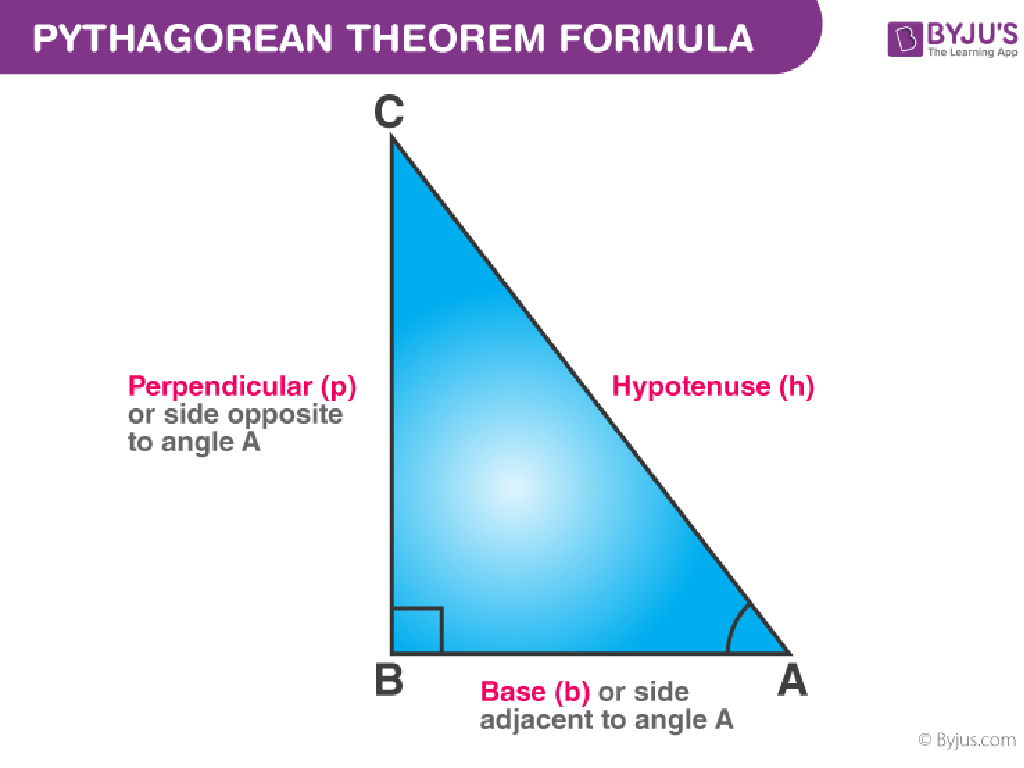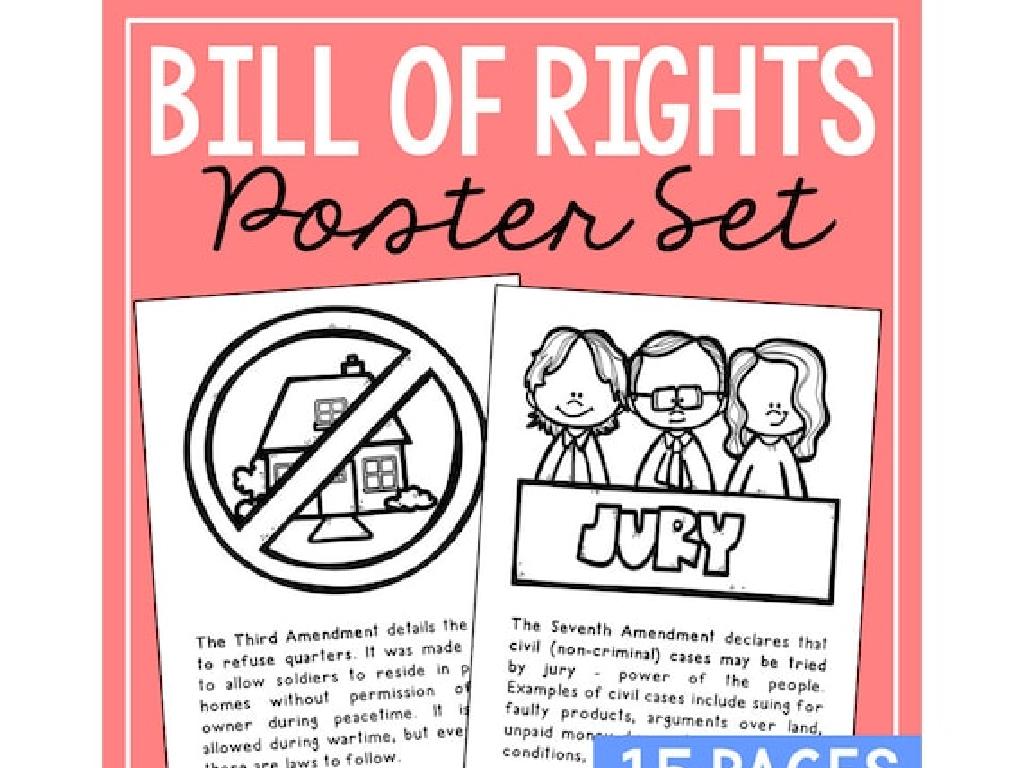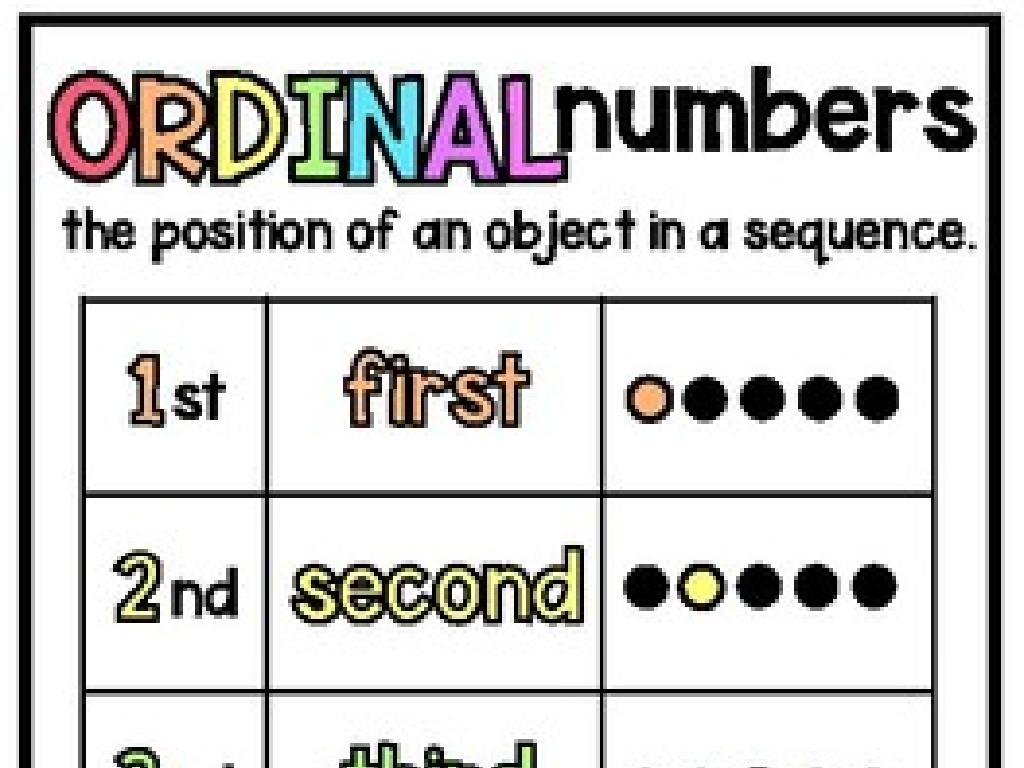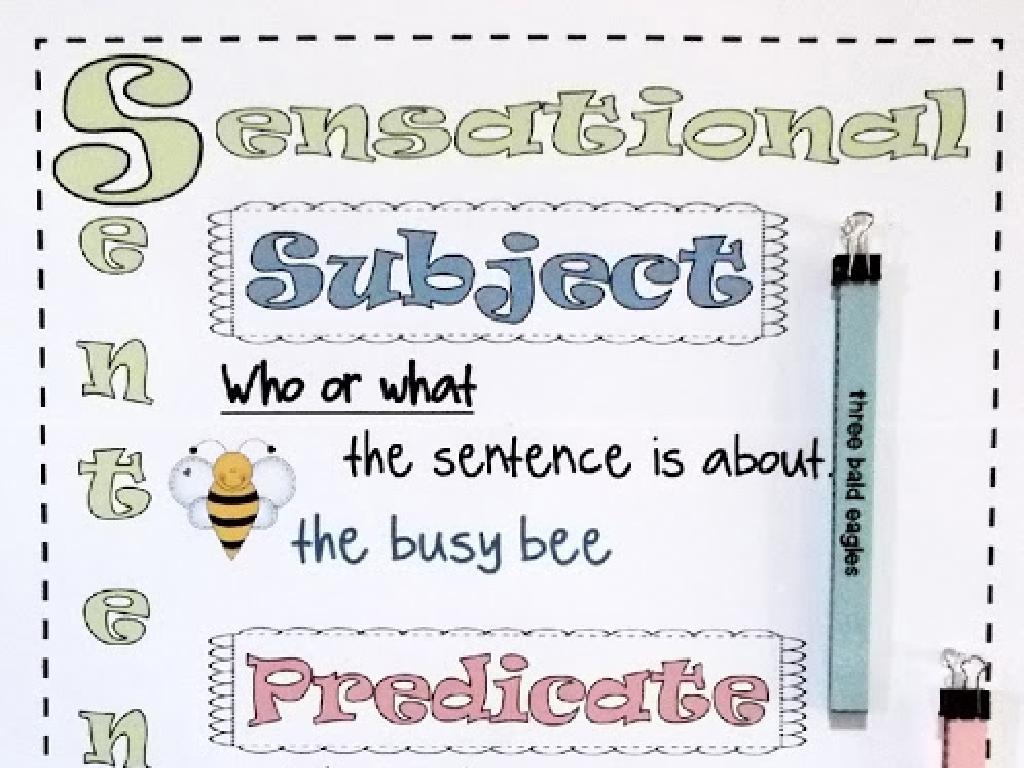Use Subordinating Conjunctions
Subject: Language arts
Grade: Fourth grade
Topic: Linking Words
Please LOG IN to download the presentation. Access is available to registered users only.
View More Content
Exploring Subordinating Conjunctions
– Understanding linking words
– Linking words connect ideas and show relationships.
– Discover subordinating conjunctions
– Words like ‘because’, ‘although’, ‘if’, ‘when’ link sentences together.
– Importance in sentence structure
– They help us combine thoughts and give reasons or conditions.
– Examples in everyday language
– ‘I did my homework because I want to learn.’
|
This slide introduces the concept of linking words, focusing on subordinating conjunctions, which are a type of linking word. Explain that linking words are essential for creating complex sentences and showing the relationship between ideas. Subordinating conjunctions are used to connect an independent clause with a dependent clause, giving additional information like reasons, conditions, or time. Provide examples and encourage students to think of their own sentences using subordinating conjunctions. Emphasize how these words help in writing more detailed and interesting sentences.
Exploring Subordinating Conjunctions
– Conjunctions: Language’s Glue
– Types: Coordinating, Subordinating, Correlative
– Today’s Focus: Subordinating Conjunctions
– Connects clauses to form complex sentences
– Examples: ‘because’, ‘although’, ‘if’
– ‘because’ shows reason, ‘although’ shows contrast, ‘if’ indicates condition
|
This slide introduces the concept of conjunctions to fourth-grade students, emphasizing their role as the ‘glue’ that holds parts of sentences together. It briefly mentions the three types of conjunctions to provide a complete picture but then narrows the focus to subordinating conjunctions. These are explained as the connectors that join dependent and independent clauses to form complex sentences. Examples include ‘because’, which is used to show reason, ‘although’ for contrast, and ‘if’ for conditions. The slide sets the stage for further exploration of subordinating conjunctions through examples and exercises in class. Encourage students to think of sentences using these conjunctions and to recognize them in their reading.
Exploring Subordinating Conjunctions
– What are subordinating conjunctions?
– Words that connect two ideas or clauses
– Examples: ‘because’, ‘although’, ‘when’, ‘if’, ‘after’
– ‘because’ shows reason, ‘although’ shows contrast
– Linking clauses together
– They join a main part with a less important part
– Practice using conjunctions
– We’ll create sentences using different conjunctions
|
This slide introduces subordinating conjunctions, which are words that help connect two ideas or clauses in a sentence. They are essential for creating complex sentences that have one main idea and another supporting idea. Examples include ‘because’, which gives a reason, and ‘although’, which shows contrast. Explain how these conjunctions link an independent clause (a complete thought) with a dependent clause (an incomplete thought that can’t stand alone). Encourage students to think of their own examples and practice creating sentences using different subordinating conjunctions to enhance their writing skills.
Crafting Complex Sentences with Subordinating Conjunctions
– Complex sentences structure
– A complex sentence has one independent clause and at least one dependent clause.
– Role of subordinating conjunctions
– Words like ‘because’, ‘if’, ‘when’, ‘although’ link clauses together.
– Combining ideas in sentences
– Use them to show cause, time, condition, contrast, etc.
– Example: Understanding ‘because’
– ‘I did my homework because I want to learn.’ – ‘because’ shows reason.
|
This slide introduces students to the concept of complex sentences, which are made up of an independent clause and one or more dependent clauses. Subordinating conjunctions are the building blocks that connect these clauses to express a complete thought. Teach students how these conjunctions can show relationships like reason, time, condition, and contrast. Use the example sentence to illustrate how ‘because’ provides a reason for doing homework. Encourage students to create their own sentences using different subordinating conjunctions to combine ideas and understand their functions.
Let’s Practice: Subordinating Conjunctions
– Learn to create complex sentences
– Use subordinating conjunctions
– Words like ‘because’, ‘although’, ‘if’, ‘when’
– Group activity: combine two ideas
– Example: ‘It was raining. We played inside.’
– ‘Because it was raining, we played inside.’
|
This slide is for a class activity aimed at teaching students how to use subordinating conjunctions to combine sentences. Subordinating conjunctions are words that connect an independent clause to a dependent clause. Start by explaining the concept with examples. Then, move on to the group activity where students will use the given ideas to create a new sentence using a subordinating conjunction. For example, they can combine ‘It was raining.’ and ‘We played inside.’ into ‘Because it was raining, we played inside.’ Encourage students to come up with different conjunctions and discuss how the meaning of the sentence changes with each. Provide guidance and ensure each group understands the task. Possible variations for the activity could include writing sentences on the board, creating a story with combined sentences, or drawing to represent the sentences.
Game Time: Conjunction Detective
– Find subordinating conjunctions
– Understand the author’s purpose
– Why was this conjunction used? What does it connect?
– Discuss with a partner
– Share your detective findings!
|
This interactive game encourages students to work in pairs to identify subordinating conjunctions in sentences and understand their usage. Subordinating conjunctions, like ‘because’, ‘if’, ‘when’, and ‘although’, connect dependent clauses to independent clauses. The activity will help students recognize how these conjunctions give additional information and show the relationship between ideas. Teachers should prepare sentences with clear subordinating conjunctions for students to analyze. After discussion, each pair will share their findings with the class, fostering a collaborative learning environment. Possible activities: 1) Matching sentences with their purposes, 2) Creating their own sentences using a given subordinating conjunction, 3) Identifying conjunctions in a paragraph, 4) Explaining how the conjunction changes the sentence’s meaning.
Class Activity: Story Builders with Subordinating Conjunctions
– Create a story with subordinating conjunctions
– Use words like ‘because’, ‘although’, ‘if’ to connect ideas
– Draw a storyboard for your story
– Illustrate the main parts of your story in sequence
– Get ready to present your story
– Share your story and storyboard with the class
|
This activity is designed to help students understand and use subordinating conjunctions in a fun and creative way. By writing their own stories and using conjunctions such as ‘because’, ‘although’, and ‘if’, they will learn how to connect ideas and build complex sentences. Drawing a storyboard will help them visualize and sequence their story, reinforcing the concept of beginning, middle, and end. Presenting to the class will build public speaking skills and confidence. For the teacher: Provide examples of subordinating conjunctions, assist students with story structure, and ensure each student prepares to present. Possible variations of the activity could include group story building or using specific themes for the stories.
Wrapping Up: Subordinating Conjunctions
– Recap the role of subordinating conjunctions
– They connect ideas and show relationships
– Homework: Craft a diary entry
– Share your day using subordinating conjunctions
– Include 5 subordinating conjunctions
– Examples: although, because, if, when, before
– Next class: Coordinating conjunctions
|
As we conclude today’s lesson, remind students of the importance of subordinating conjunctions in forming complex sentences and showing the relationship between ideas. For homework, they should write a diary entry reflecting on their day and creatively incorporate at least five different subordinating conjunctions. This will help reinforce their understanding and use of these conjunctions in writing. In the next class, we’ll shift our focus to coordinating conjunctions, which link words, phrases, or clauses of equal importance. Be prepared to provide examples of coordinating conjunctions and how they differ from subordinating conjunctions.






